Michelle Phillipov, The University of Adelaide
After dominating broadcast and cable television schedules for much of the 2000s, food TV has found a range of new lives in non-linear, digital forms of production and circulation. Food content has proliferated on digital platforms, with both new and re-run food offerings becoming staples of streaming services, catch-up TV, and social media. This sheer proliferation of content has disrupted many of our typical understandings of what food TV ‘is’, how it operates as a textual and cultural form, and where and how its politics are now located.
This playlist is inspired by research for my book Digital Food TV: The Cultural Place of Food in a Digital Era, which explores the changing meanings, politics, and affects of televisual food content in a digital era. It shows how the politics of digital food TV is now not so much a politics of ‘representation’ as it is a politics of affect. That is, I argue, the politics of digital food TV lies not so much in its manifest textual content as in its capacity to flatten or amplify intensity—the ways in which texts act upon audiences and industries as they move within and between platforms and services, and how such affects can be mobilised or diminished in ways not always predictable in advance.
What is made possible or impossible by food TV’s new (and old) digital forms? In what ways does food TV’s digital transformation alter the cultural and political work its texts perform? What are the new politics of food and food television in a digital era?
Gourmet Farmer (Perpetual Entertainment, 2010)
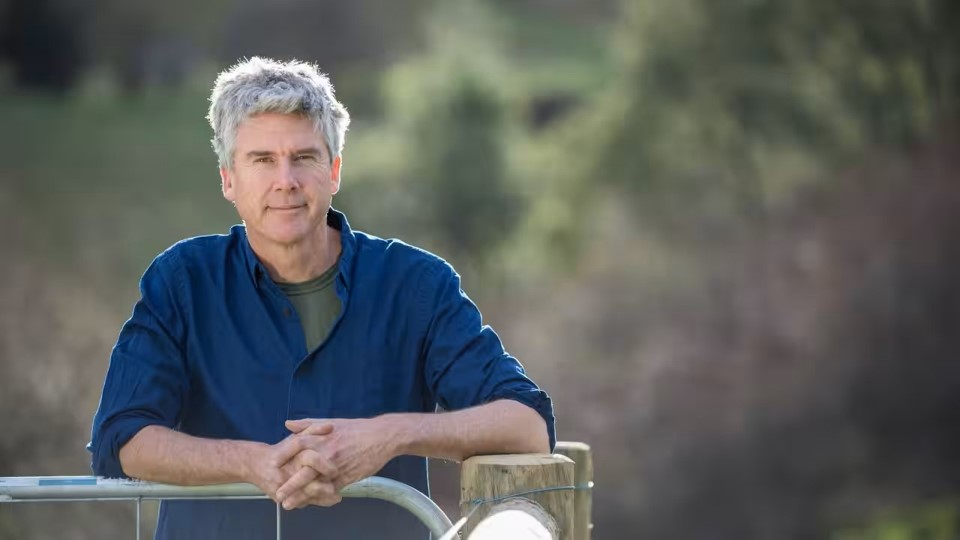
Chronicles the story of Matthew Evans, a big-city food critic who gives up his job in Australia’s capital to set up a small holding in rural Tasmania. Evans grows crops and livestock, meets other small-scale producers, and cooks a range of recipes using his own produce. The show’s ‘feel good’ sensibility is underpinned by strong strain of activism, particularly a desire to consider alternatives to the modern industrial food system regarding environmental and animal welfare impacts. But re-watching the series on the SBS on Demand app—removed from the paratexts (websites, cookbooks, media comments) of its original broadcast context, and at a time of heightened climate crisis—the show seems strangely apolitical, with its insistent focus on meat consumption and the almost shocking green abundance of the landscapes.
Available on SBS On Demand at the following link: sbs.com.au/ondemand/tv-series/gourmet-farmer.
Season 1 Episode 1 is also available on YouTube at the following link: youtube.com/watch?v=jkKOF0GgUt4.
Crazy Delicious (Optomen, 2020)
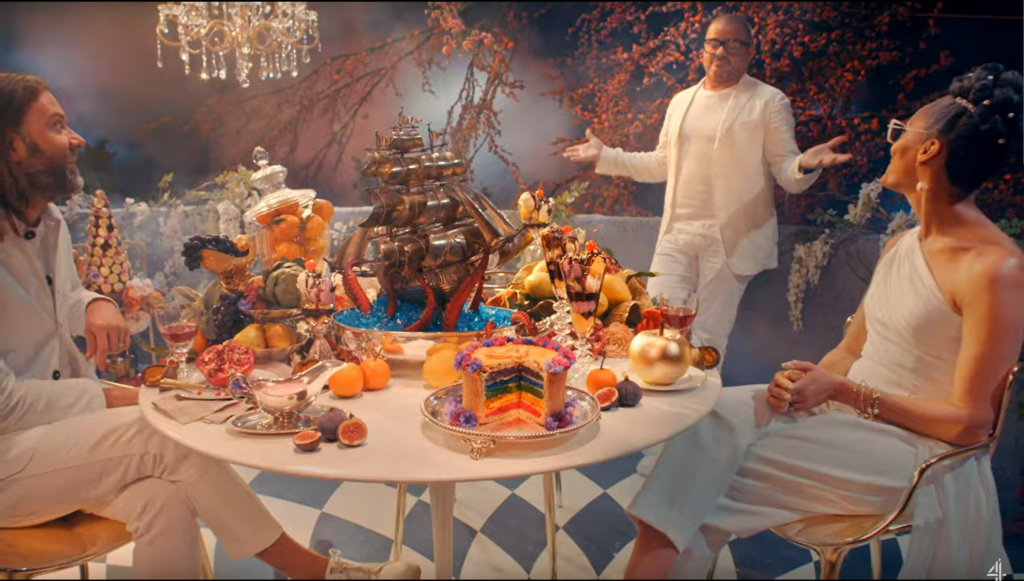
Each episode of reality cooking contest Crazy Delicious features three ‘inventive home cooks’ whose visually striking recipes are judged by ‘food gods’ Carla Hall, Heston Blumenthal, and Niklas Ekstedt. With its low stakes, easy-going vibes, and Instagramesque visual pleasures, Crazy Delicious departs from the harsh judging and disciplining of contestants characteristic of earlier reality cooking shows such as MasterChef, with its dentists and lawyers vying to give up their secure, highly-paid jobs to pursue their food ‘dream’. The ‘inventive home cooks’ of Crazy Delicious, in contrast, are presented not even as wannabe professionals, despite the fact that most come to the show with established followings on Instagram and run micro-businesses based around content creation, brand endorsements, and/or home-based enterprises. By framing them as amateurs, while simultaneously making use of their extensive online networks to promote the series, Crazy Delicious normalises perhaps even more insidious ideologies of ‘aspirational labour’ than reality programs in which the exploitation of contestants was more explicit.
Available on Netflix at the foillowing link: netflix.com/au/title/81161673?source=35.
Watch the official trailer on YouTube at the following link: youtube.com/watch?v=oAFgrAe5Gbo.
How to Make an Easy Loaded Upside Down Drop Cake (Rosie’s Dessert Spot, 2022)
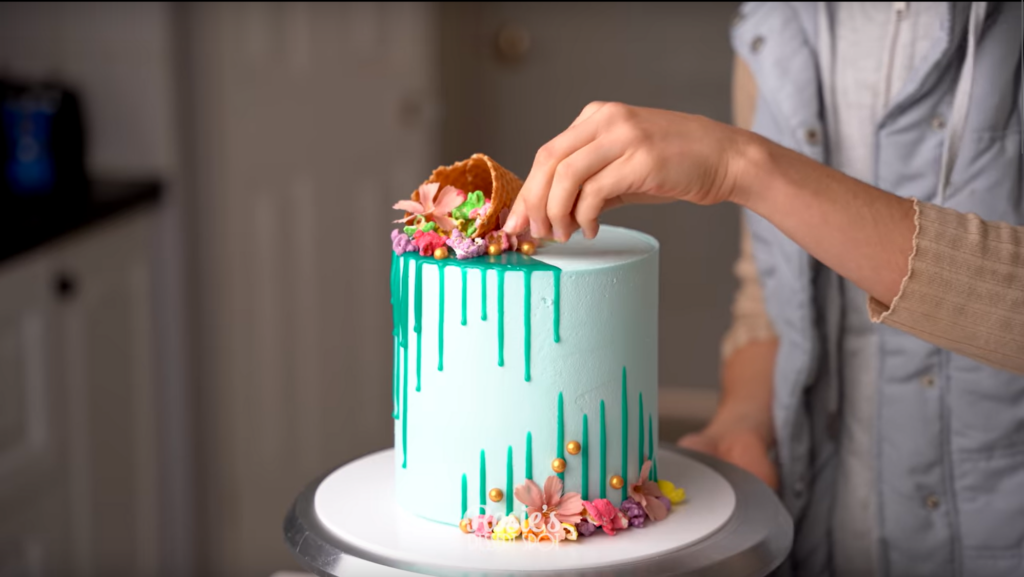
Disembodied hands prepare a four-tiered layer cake with turquoise drip effects and artfully placed decorations, all accompanied by the soothing, softly spoken instructional commentary characteristic of Rosie’s Dessert Spot’s (594K subscribers) cake-decorating tutorials. While scholars and marketers have typically understood users’ engagement with short-form food content as primarily motivated by a desire for cooking instruction, the sonic and visual triggers of such videos can also exceed their representational logics, tapping into affective comforts of baking and the visceral pleasures of watching food we need not ever make or eat. Scrolling through the comments beneath this video, it is clear that some subscribers do indeed follow the channel for practical decorating ideas and advice, but a sizeable number of commenters also remark on the visual pleasures of Rosie’s creations and the soothing nature of her voice (e.g. “Beautiful voice and decorations”; “Your voice is sooo soothing… and i love all your decorations…”).
Available on YouTube at the following link: youtube.com/watch?v=D73cUO6YSO4.
“Pastel Rainbow Crepe Cake Recipe” (Cooking Tree, 2020)
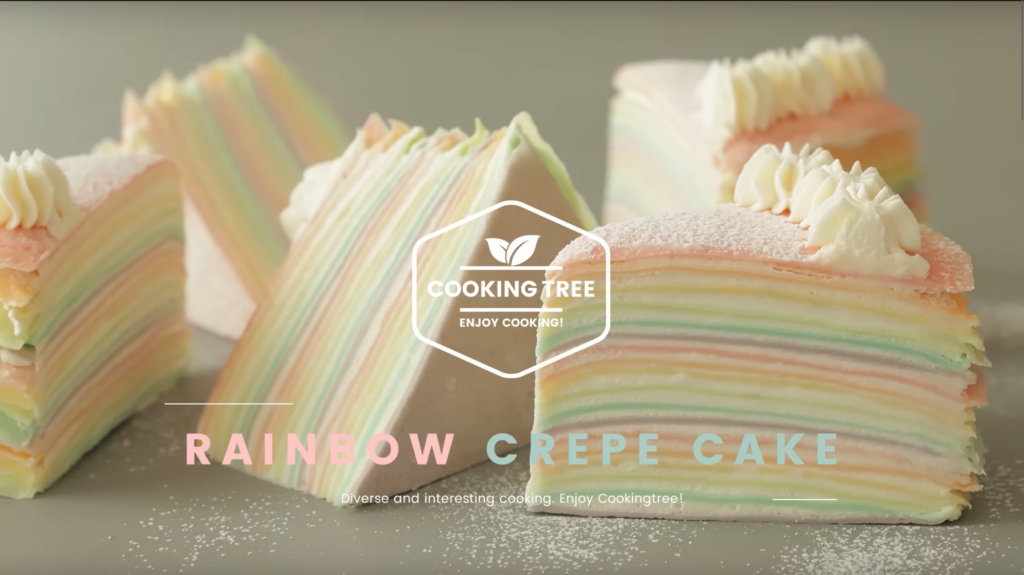
Cooking Tree, perhaps YouTube’s most popular ASMR (Autonomous Sensory Meridian Response) baking channel with nearly 5M subscribers, combines high-quality video with augmented audio focused on the gentle, meditative actions of stirring, sifting, whipping, and assembling. ‘Pastel Rainbow Crepe Cake Recipe’ amplifies food’s materiality through heightened, hyper-proximate sounds of flour being sifted and cream being whipped, soothing pastel colours, and tantalising images and sounds of consumption. Looking beyond its representational or instructional logics reveals the ways in which such videos bring together texts, platforms, and bodies in ways that that give rise to nascent and contingent forms of cooking and eating. These simultaneously expand the conceptual boundaries of food TV and, indeed, those of cooking itself. They also bring both bodies and data into the service of the algorithmic and market rationalities of digital platforms, highlighting the complex tensions between the user-generated and commercial agendas that underpin the production and circulation of online food texts.
Available on YouTube at the following link: youtube.com/watch?v=vaj2TSPe5_4.
Keep Cooking and Carry On (Channel 4, 2020)
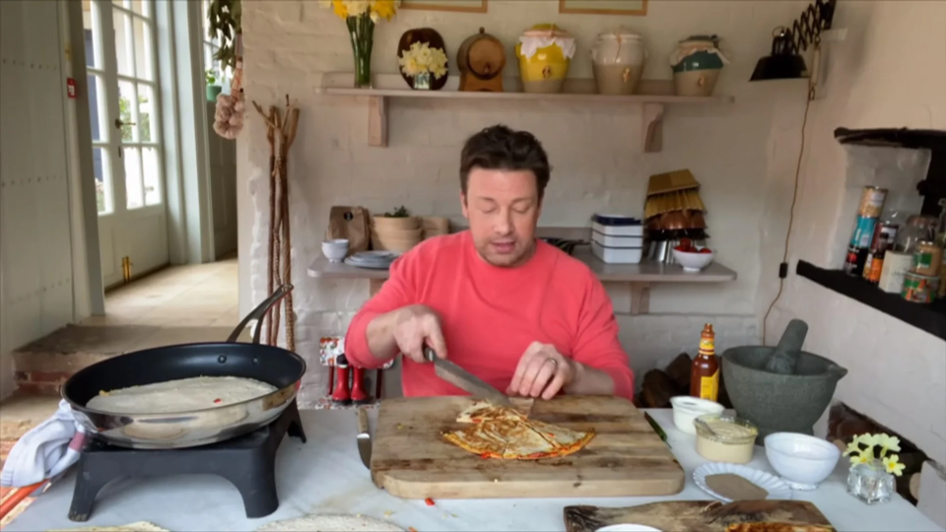
Hastily pulled together shortly after the COVID-19 pandemic was officially declared in March 2020, much of this Jamie Oliver cooking series was filmed from Oliver’s home and using his family’s mobile phones. The war-time era austerity nostalgia of the show’s title notwithstanding, the shift to at-home filming part way through the series disrupted many of the traditional logics and aesthetics of celebrity-led food television. The mobile phone’s truncated field of view capitalised on the affective intimacy of the close-up, while the limited editing, regular interruptions, and imperfect presentation helped to situate the viewer withinthe televisual world, rather than as an outsider looking in. Social media responses revealed how the showhelped form new relationships between viewers, creating feelings of proximity and constructing the home as a portal for forms of connection and community within and beyond the domestic sphere. For a moment, at least, there were new possibilities for imagining the progressive potential of food beyond the privatised space of the family home—possibilities that were quickly closed down by Oliver’s subsequent program Easy Meals for Every Day, where production returned to more lifestylised, aspirational depictions of food, cooking, and domestic life.
Available on Prime at the following link: amazon.co.uk/Jamie-Keep-Cooking-Carry/dp/B086WR93JG.
Also on Binge at the following link: binge.com.au/shows/show-jamie-keep-cooking-and-carry-on!9897.
And on Hulu at the following link: hulu.com/hub/reality-tv/collections/9331.
Michelle Phillipov is an Associate Professor in Media at the University of Adelaide. Her research explores how media interest in food shapes public debate, media and food industry practices, and consumer politics. She is an author or editor of five books, including Digital Food TV: The Cultural Place of Food in a Digital Era (Routledge, 2023), Alternative Food Politics: From the Margins to the Mainstream (with Katherine Kirkwood, Routledge, 2019), and Food and Media Industries: The New Politics of Food (Palgrave Macmillan, 2017).
